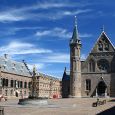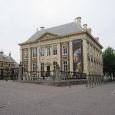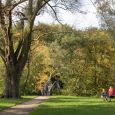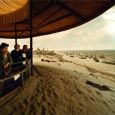Hague
Advertisement
By Air
Most visitors who choose to fly arrive at Schiphol International Airport (Amsterdam). There is a direct train connection with the city of The Hague. Travelling time is thirty minutes and the frequency is four times per hour. In addition to Schiphol Airport, there is Rotterdam Airport, a twenty minutes drive from The Hague. This airport is more orientated towards Western Europe.
By Rail
The Netherlands has an extensive and modern network of railways. Trains usually leave and arrive on time and are very comfortable and clean. The ‘NS’ (Netherlands Railways) connects the big cities with Intercity trains that only stop at the larger railway stations. There are two international and well-equipped train stations (The Hague Central Station and The Hague Hollands Spoor). There is a direct connection from Amsterdam Schiphol Airport to The Hague as well as frequent trains to all other large cities in the Netherlands.
By Bus
Eurolines are the main operator for international buses to the Netherlands. Most journeys require changes in Paris and the waiting time can be significant.
Advertisement
Mauritshuis
The Mauritshuis is a 17th century palace in the heart of The Hague. The museum houses a world-famous collection of paintings by such old masters as Rembrandt, Vermeer, Jan Steen and Frans Hals. The collection of The Mauritshuis reveals a lot about the history and culture of the Netherlands. The oldest part of the collection consists of the paintings owned in the 18th century by the stadholder, Prince Willem V of Orange-Nassau. In 1815 his son, King Willem I handed over these paintings to the Dutch state, thus providing the basis of the Royal Cabinet of Paintings, now called the Royal Picture Gallery. Though he inherited some of the collection, he purchased many paintings when still quite young. His collection was exhibited in the Prince Willem V Gallery in a building on the Buitenhof. Many important paintings in The Mauritshuis came from this collection, such as The Bull by Potter, The Young Mother by Dou, The Garden of Eden by Brueghel and Rubens, and Holbeins Portrait of Robert Cheseman. In the last 200 years the collection of the Mauritshuis has grown considerably. In 1822 the museum housed around 200 paintings; now it has nearly 800. The Mauritshuis itself is a unique building and one of the most beautiful examples of Dutch classicist architecture. It is based on the principles of classical Greek and Roman architecture. It was built in what was then one of the most fashionable neighbourhoods in The Hague. In its immediate vicinity were the citys most beautiful homes, as well as the Binnenhof the centre of government with the stadholders quarters. The Great Hall on the upper floor is the grand finale of a tour of the building. The ceiling of this hall boasts a cupola with a walkway around it, where musicians could sit and play.
Knights' Hall
In The Hague, at the east end of the Binnenhof's central courtyard is the Knights' Hall (Ridderzaal), which dates from the time of Floris V. The hall is used for receptions and congresses and also for the state opening of Parliament on the third Tuesday in September (Prinsjesdag), when the Queen drives to Parliament in her golden coach and delivers the speech from the throne. This large Gothic hall (40m/130ft by 20m/65ft) has magnificent stained glass depicting the coats of arms of Dutch towns; particularly fine is the rose window with the arms of the principal noble families of the Netherlands. The heavy timber roof structure with its 18m/60ft long beams has the appearance of an upturned ship. Wooden heads symbolizing eavesdroppers from the higher powers are supposed to deter members of the assembly from lying. The hall was built by Gerard van Leiden in the 13th century as a banqueting hall, and in later centuries served a variety of purposes - as a market hall, a promenade, a drill hall, a children's playground, a public record office, a hospital ward, even the offices of the state lottery. It was restored between 1898 and 1904 to serve its present purposes.
Hague Historical Museum
The historical museum of The Hague, the Haags Historisch Museum, is located in the heart of The Hague near the Binnenhof. The museum is housed in the former archery house of St. Sebastians guild and dates from 1636. It is built on the spot of a gatehouse that was used by the civic guard. Parts of its cross-vaulted basement have been incorporated in the new archery house and can still be seen today. Since the late 18th century, after the dissolution of the civic guard, the building has been used as a hotel, court house and museum. Numerous paintings and artefacts from the museum's collection illustrate the history of more than seven centuries of The Hague. Dutch history is brought to life by a wealth of interesting objects, including Van Oldenbarnevelts walking stick, treasures from the Silver Fleet, the first Dutch kilogram and Willem Dreess desk. A spectacular, nearly 5-meter wide View of The Hague by Jan van Goyen is on display, as well as other pieces by such artists as Jan ten Compe and the artistic family La Fargue. The museum also displays church silver from the late Middle-Ages, furniture and scale models. In the basement the exhibit covers recent archaeological excavations in The Hague.
Haagse Bos
From the Korte Voorhout, Leidsestraatweg goes east between the Malieveld and the Koekamp deer park to the Haagse Bos (Het Bos), a 2km/1.25mi-long expanse of wooded parkland in The Hague, with beautiful avenues.
At Zeestraat 65B is the Mesdag Panorama, the largest of its kind in the world. Housed in a rotunda, this gigantic picture, 120m/130yd long by 14m/45ft high, was painted by H. W. Mesdag and his wife Sientje Mesdag-Van Houten, together with G. H. Breitner, B. J. Blommers and Th. de Bock. It depicts Scheveningen as it was around 1880, with charming views of the sea, the beach and the dunes. Panoramas, the "cinema of the 19th century", were the first optical medium designed to create an illusion of three-dimensional effect. The circular painting is indirectly lit from above, the light source remaining out of sight. Between the picture and the spectator is an intervening area - in this case dune sand - with real objects or mock-ups of real buildings to heighten the illusion, leaving the spectator with no point of reference in reality.
April - June
June - August -> 17(°C) - Summer
January - March -> 3(°C) - Spring
Advertisement







